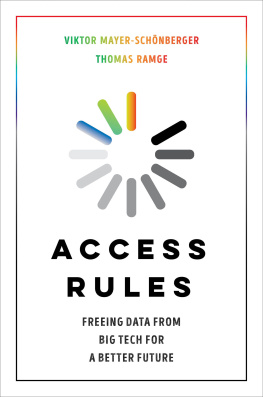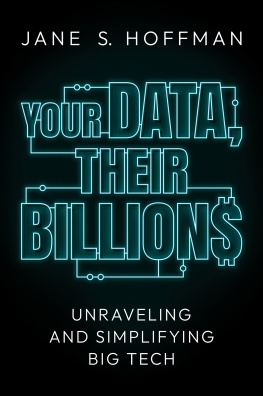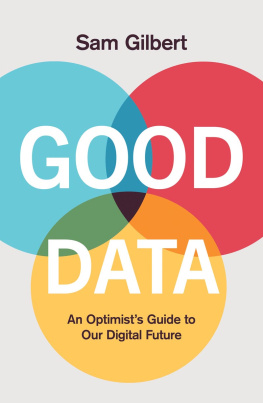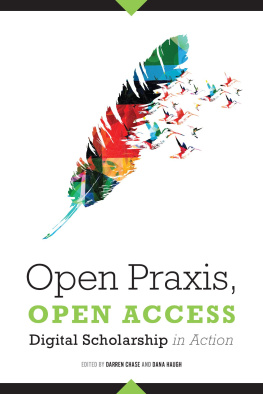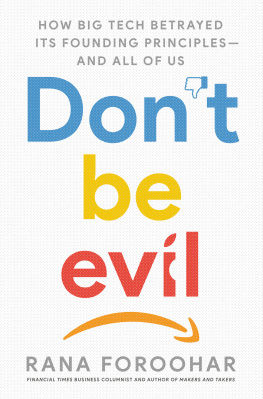1
The Power of Information
In the early 1730s, a young publisher in Philadelphia would hand over two bundles to the citys postal couriers on a regular basis: a large one of copies of his newspaper, the Pennsylvania Gazette , and, covertly, a smaller one of bank notes. The money wasnt to cover the postage. It was a straightforward bribe. The young printer had no choice in the matter. His name: Benjamin Franklin.
Fifteenth child of a soap and candle maker, he had acquired the Gazette from Samuel Keimer, a flamboyant but heavily indebted publisher who fled his creditors for the Caribbean after a brief sojourn in jail. Ambitious and enterprising, the young Franklin was a brilliant essayist with a keen nose for the stories that caught the interest of a growing class of readers in prerevolutionary America. Under his leadership, his paper soon came to be seen as witty, entertaining, and politically smart while eschewing an overtly rebellious tone against the British colonial authority. But at the same time the paper was imbued with Franklins conviction that a free press would pave the way to an American democracy.
The papers quality, however, did little to help the talented publisher increase its circulation or influence. Unlike Franklin, no one would mistake the editor of Philadelphias largest newspaper, the American Weekly Mercury , for a brilliant essayist. But he did hold down a secondary job working for the British Crown. This was Andrew Bradford, Philadelphias postmaster.
At the time, a colonial postmaster could decide at his own discretion which newspapers were sent free of charge through the mailand which not. In a nutshell: A self-interested supernumerary of the King of England controlled the flow of information and its commercial use. The Mercury was sent by mail, and the Gazette wasnt. It was that simple. Benjamin Franklin was forced to play along. He managed to keep the Gazette halfway afloat by bribing the postal couriers whenever he could. But, in 1736, the situation changed.
The British colonial postmaster general had become increasingly dissatisfied with Bradfords services, especially with the meager profits he was generating. Consequently, he appointed Franklin, clearly a far more capable publisher, to be regional postmaster. Franklin immediately put an end to unfair competition in newspaper distribution. All newspapers in colonial Pennsylvania would now be distributed on equal terms. From then on, the Pennsylvania Gazettes circulation grew. Experiencing how the most important information channel in colonial New England could be abused shaped Franklins outlook for the rest of his political life. And the postal system remained an issue dear to him. In 1757, Franklin was appointed co-deputy postmaster of the British Crown for all the American colonies. He was dismissed from this office shortly before the American Revolution for being too close to the rebels. During the Second Continental Congress, Benjamin Franklin advanced the cause of establishing an independent United States Postal Service. In 1775, he was named the first US postmaster general. The Constitution explicitly mentioned an independent postal service and made it a federal agency. The Postal Service Act, too, bore Franklins handiwork. It required the postal service to deliver all newspapersby far the most important source of information for citizens at the timeinexpensively and on equal terms throughout the country. The US Post became an irrevocable element of the founding myth of the United States.
What seems obvious today, after more than two centuries of experience with democracy, was already clear to the Founding Fathers: Access to information is the foundation of democratic decision-making. The principle of a free press means that journalists can report news and offer analysis and commentary and ensure that what they write reaches people.
Fast forward to spring 2020. As the first pandemic lockdowns were lifted, major decisions confronted politicians, society, and individuals: What can we now do again, and where? How can further waves of the pandemic be brought under control more quickly, more effectively, and, above all, in a more targeted way? This required information, and not just about the virus, but also about how it spreads and how people behave. Telecommunications and navigation system providers granted public health authorities access to regional mobility data, but that was neither granular enough nor did it help individuals to know whether and when they had been exposed to the virus.
What was needed was a way to trace individual infections. A number of Asian nations had weathered the first wave well; by manually tracking infections, they were able to quarantine exposed individuals effectively. Governments wanted to build on this experience but use a technological solutionsmartphone apps. These apps were primarily designed to inform users when theyd had contact with an infected person. However, a number of countries also wanted tracing apps to provide information in anonymized form about how infections were spreading within a given locality. The hope was that, armed with such information, decision makers might avoid another complete lockdown and instead adopt measures more limited in time and scope.
With this goal in mind, public health authorities negotiated with Google and Apple. These two mega-businesses dominate the smartphone market. Their help and support are vital for tracing apps to work. Otherwise, such apps cant accurately measure the distance between users and wont be available for download in the app store. To the surprise of government officials, the Silicon Valley duopoly refused to help. Instead, the pair took on a role usually played by privacy activistsas evangelists of minimal data use. Google and Apple executives pushed for maximum privacy protection and, whats more, effectively answered a question normally left to democratically elected public officials who (one hopes!) are well-briefed by their scientific advisers: How best can we protect peoples lives in a pandemic with all the possibilities on offer from digital technologies?

